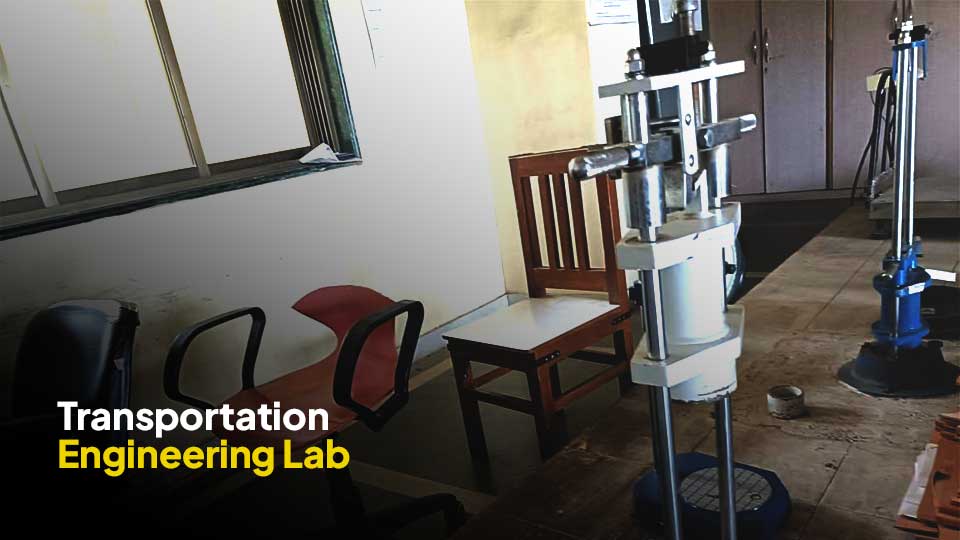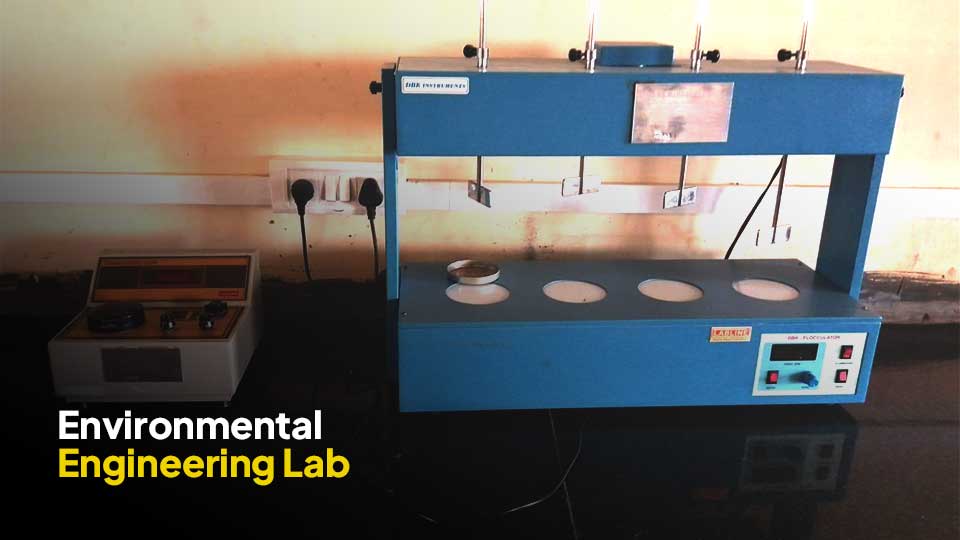ABOUT DEPARTMENT
Diploma in Civil Engineering at DRIEMS is a rigorous 3-year program designed to provide comprehensive training in the construction, design, and maintenance of essential infrastructure, including roads, dams, canals, bridges, and buildings. This program offers students invaluable exposure to material testing, reinforced concrete structures, quality control, construction management, and entrepreneurship.
Students gain practical, hands-on experience throughout the program, learning to manage construction projects from inception to completion. Through extensive research and innovative problem-solving, students develop the skills needed to handle both basic and advanced stages of project management. Our curriculum ensures that graduates are fully prepared to tackle real-world challenges with confidence and creativity.
Graduates of our Diploma in Civil Engineering program are highly sought after in the construction industry, equipped with the knowledge and skills to excel in various roles. The course not only provides technical expertise but also fosters a broad perspective on career growth, opening doors to numerous job opportunities in the construction sector. Whether you aim to join a leading construction firm or embark on an entrepreneurial path, our diploma equips you with the foundation for a successful and fulfilling career.
Join our Diploma in Civil Engineering and start building the world of tomorrow today.
15
YEARS OF LEGACY
OUR VISION
“To create competent graduates in civil engineering with moral and social responsibilities.”

OUR MISSION
“To enhance competency by providing qualified professionals and exllents infrastructures with well equipped teaching & learning process to produce quality civil engineering.”
LABS

1. Determination of moisture content, specific gravity of soil solids and in-situ field density of soils as well as field identification of fine-grained soils
2. To determine the grain size distribution of soils and consistency or Atterberg limits of fine-grained soils.
3. To determine coefficient of permeability of soils in laboratory.
4. Geotechnical engineering lab use to determine the strength of soil to construct the structure on soil.
1. Determination of moisture content, specific gravity of soil solids and in-situ field density of soils as well as field identification of fine-grained soils
2. To determine the grain size distribution of soils and consistency or Atterberg limits of fine-grained soils.
3. To determine coefficient of permeability of soils in laboratory.
4. Geotechnical engineering lab use to determine the strength of soil to construct the structure on soil.
1. Determination of moisture content, specific gravity of soil solids and in-situ field density of soils as well as field identification of fine-grained soils
2. To determine the grain size distribution of soils and consistency or Atterberg limits of fine-grained soils.
3. To determine coefficient of permeability of soils in laboratory.
4. Geotechnical engineering lab use to determine the strength of soil to construct the structure on soil.
1. Determination of moisture content, specific gravity of soil solids and in-situ field density of soils as well as field identification of fine-grained soils
2. To determine the grain size distribution of soils and consistency or Atterberg limits of fine-grained soils.
3. To determine coefficient of permeability of soils in laboratory.
4. Geotechnical engineering lab use to determine the strength of soil to construct the structure on soil.
1. To acquire basic knowledge of Geological Lab practices and apply it for the safe development of Civil Engineering works.
2. To examine the mineral and rock sample and understand their fundamental properties for their evaluation as construction and foundation material.
3. To study the Geological maps and their sections in terms of selecting the sites for various civil engineering structures.
4. To study Borehole problems for determination of subsurface geology of the area.
5. To Study the drilling data and calculate RQD for assessment of rock masses for Civil Engineering purposes.
1. To determine Penetration grade and Viscosity grade of bitumen.
2. To find the Softening point and Ductility value of bitumen.
3. To determine Impact, Abrasion and Crushing value of aggregate.
4. To carry out shape test on aggregates.
5. To carry out Classified volume study and plot speed profile at mid-block section.
1. To determine Penetration grade and Viscosity grade of bitumen.
2. To find the Softening point and Ductility value of bitumen.
3. To determine Impact, Abrasion and Crushing value of aggregate.
4. To carry out shape test on aggregates.
5. To carry out Classified volume study and plot speed profile at mid-block section.
1. To determine Penetration grade and Viscosity grade of bitumen.
2. To find the Softening point and Ductility value of bitumen.
3. To determine Impact, Abrasion and Crushing value of aggregate.
4. To carry out shape test on aggregates.
5. To carry out Classified volume study and plot speed profile at mid-block section.
1. To determine Penetration grade and Viscosity grade of bitumen.
2. To find the Softening point and Ductility value of bitumen.
3. To determine Impact, Abrasion and Crushing value of aggregate.
4. To carry out shape test on aggregates.
5. To carry out Classified volume study and plot speed profile at mid-block section.
1. To learn stress – strain behaviour and physical properties of materials and to compute the Stresses developed and deformation of Elastic members.
2. To compute the distribution of shear stress and the flexural (bending) stress across the cross section of structural members.
3. To study circular shafts under the action of twisting moment.
4. To learn the computation of slope and deflection of elastic beams and general theorems used in this computation.
1. To learn stress – strain behaviour and physical properties of materials and to compute the Stresses developed and deformation of Elastic members.
2. To compute the distribution of shear stress and the flexural (bending) stress across the cross section of structural members.
3. To study circular shafts under the action of twisting moment.
4. To learn the computation of slope and deflection of elastic beams and general theorems used in this computation.
1. To learn stress – strain behaviour and physical properties of materials and to compute the Stresses developed and deformation of Elastic members.
2. To compute the distribution of shear stress and the flexural (bending) stress across the cross section of structural members.
3. To study circular shafts under the action of twisting moment.
4. To learn the computation of slope and deflection of elastic beams and general theorems used in this computation.
1. The basic fluid mechanics concepts.
2. Measuring pressure, velocity and discharge of fluid flow through pipes and channels.
1. The basic fluid mechanics concepts.
2. Measuring pressure, velocity and discharge of fluid flow through pipes and channels.
1. The basic fluid mechanics concepts.
2. Measuring pressure, velocity and discharge of fluid flow through pipes and channels.
1. The basic fluid mechanics concepts.
2. Measuring pressure, velocity and discharge of fluid flow through pipes and channels.
1. To describe the concepts of fluid dynamics and its applications.
2. To exemplify the fundamentals of impulse momentum principle and explain the working of various hydraulic machines.
3. To classify the uniform and non-uniform flow in open channel.
1. The basic principles and classification of surveying.
2. Various methods of measurements in surveying.
3. The appropriate techniques of surveying and skills of collecting field data for preparing drawings.
4. Advancements in instruments and methods of surveying.
5. The methods of computing areas and volumes using the site specific data for various purposes.
6. The setting out techniques of curves.
1. The basic principles and classification of surveying.
2. Various methods of measurements in surveying.
3. The appropriate techniques of surveying and skills of collecting field data for preparing drawings.
4. Advancements in instruments and methods of surveying.
5. The methods of computing areas and volumes using the site specific data for various purposes.
6. The setting out techniques of curves.
1. To analyse engineering skill related to water and wastewater sample.
2. To apply decision related to treatment of water and wastewater based on standards.
3. To understand the fundamental characteristics of municipal solid waste.
4. To acquire knowledge on the severity of air pollution and suggest remedies and preventive measures.
5. To understand the basic concepts of noise and its measurement.
1. To analyse engineering skill related to water and wastewater sample.
2. To apply decision related to treatment of water and wastewater based on standards.
3. To understand the fundamental characteristics of municipal solid waste.
4. To acquire knowledge on the severity of air pollution and suggest remedies and preventive measures.
5. To understand the basic concepts of noise and its measurement.
1. To analyse engineering skill related to water and wastewater sample.
2. To apply decision related to treatment of water and wastewater based on standards.
3. To understand the fundamental characteristics of municipal solid waste.
4. To acquire knowledge on the severity of air pollution and suggest remedies and preventive measures.
5. To understand the basic concepts of noise and its measurement.
1. To determine physical and mechanical properties of materials used in the manufacturing of concrete like cement and aggregates.
2. To test the physical attributes and mechanical strength of burnt clay bricks used in the construction of structures.
3. To determine the various properties of fresh and hardened concrete with and without the addition of admixtures.
4. To study the different basic non-destructive tests conducted in the laboratory or on site to determine the durability and strength of existing concrete structures.
5. To utilize the knowledge of mix design in the manufacturing of concrete, in the laboratory.
6. To test the physical attributes and mechanical strength of timber and tiles used in the construction of various components of the structure.
7. To understand the practical scenario of the commonly used building materials in terms of their availability, cost and significance through market surveys.
Program Educational Objectives (PEO)
as civil engineering professional in industry, government or other organization - designing, improving, leading and implementing efficient civil engineering practices.
in developing safe, sustainable, economical and environmentally sound solutions to civil engineering problems either withing the profession or through post-graduation research.
to effectively communicate civil engineering concepts orally and in written forms.
through continuous development of technical skills, improvement of professional efficiency and assumption of roles of responsibilities in professional service.

Program Outcomes (PO)



Program Specific Outcomes (PSO)
Proficiency in overseeing extensive infrastructure projects, guaranteeing their safe and cost-efficient execution. This entails adeptness in fast track construction methodologies and proficient project management skills.
Competence in utilizing advanced building software packages to compute safe loads and stresses, ensuring the structural integrity and functionality of designed components.
Proficiency in devising innovative strategies to enhance traffic safety and efficiency through intelligent transportation systems. Additionally, the ability to mitigate environmental impacts associated with construction by incorporating green building principles into project designs.

INTERNATIONAL PLACEMENT
WOMEN DEVELOPMENT CELL
STUDY & WORK ABROAD
Our Proud Placement Partners
STUDY & WORK IN 6 COUNTRIES
KNOW FROM OUR STUDENTS
Faculty Profile
Our Civil Engineering faculty at the Engineering College of DRIEMS is a highly skilled and experienced team dedicated to shaping the next generation of engineers. With expertise spanning various specialties within Civil Engineering, they bring a wealth of knowledge from both academia and industry to the classroom. Through innovative teaching methods and hands-on guidance, our faculty members inspire and empower students to excel in their academic pursuits and make meaningful contributions to the field.

Prof. Krishna A. Joshi

Prof. Pritee Vanjare

Prof. Avinash Ratnakar

Prof. Roshan Shinde

Prof. Habeebi Aasif Anjum

Prof. Manisha Lipankar

Prof. Vishwas Dhas

Dr. Gajanan V. Pradhan

Prof. Priyanka Khanikar

















































